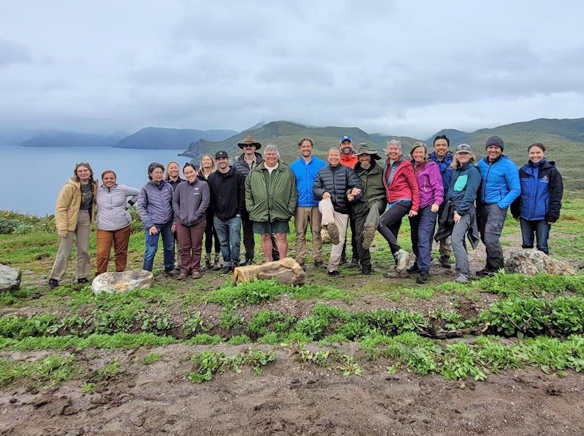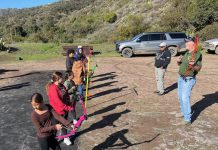
Many collaborators had worked on Catalina for decades
March marked the first time that Catalina Island and the Conservancy has hosted the Islands of California’s Botanical Collaborative Extravaganza. The binational Collaborative of islands off the Pacific Coast of the states of California and Baja California Peninsula was established in 2016 to help advance conservation priorities, with island and mainland partners gathering to share information, experience, and resources. Though each island is different, they are all part of the biodiversity hotspot that is the California Floristic Province.
“Scientists who attended said they felt hopeful and excited for the future of conservation on Catalina,” said Acting Conservation Director Lauren Dennhardt, Ph.D. “Sharing resources among islands is one of the most efficient and beneficial things we can do, allowing us all to learn from each other to do conservation more effectively into the future.”
Attendees stayed at USC Wrigley and heard presentations by botanical luminaries including John Knapp, Steve Junak, and more. From the Conservancy, Rare Plant Ecologist Kevin Alison spoke about in-vitro conservation, and Dennhardt spoke about restoration. The group visited various exclosures across Catalina including Whites Restoration Area and toured Little Harbor and the Ackerman Native Plant Nursery as discussions about restoration continued.
Many of the collaborators had worked on Catalina and its special species for decades, highlighting the importance of having a complete history of previous projects and lessons learned from the past. Due to its continued history with non-native browsers and other environmental factors, Catalina has more than 300 percent more presumed extirpated plant taxa – species that no longer exists in the location – than any other island in the collaborative.
“We talked about plant reintroduction and went over models for how and when to reintroduce species,” added Dennhardt. “Learning from the work of our partners can really jump start projects and save years of work and investment.”
Catalina Island Conservancy scientists are excited to learn from and collaborate with other conservation industry leaders both now and in the future.










